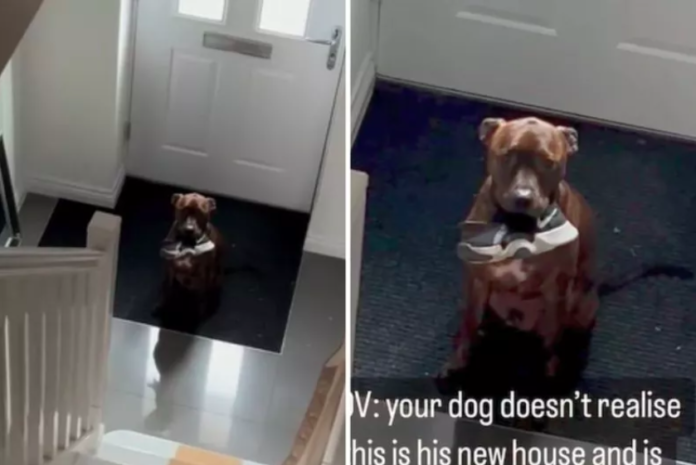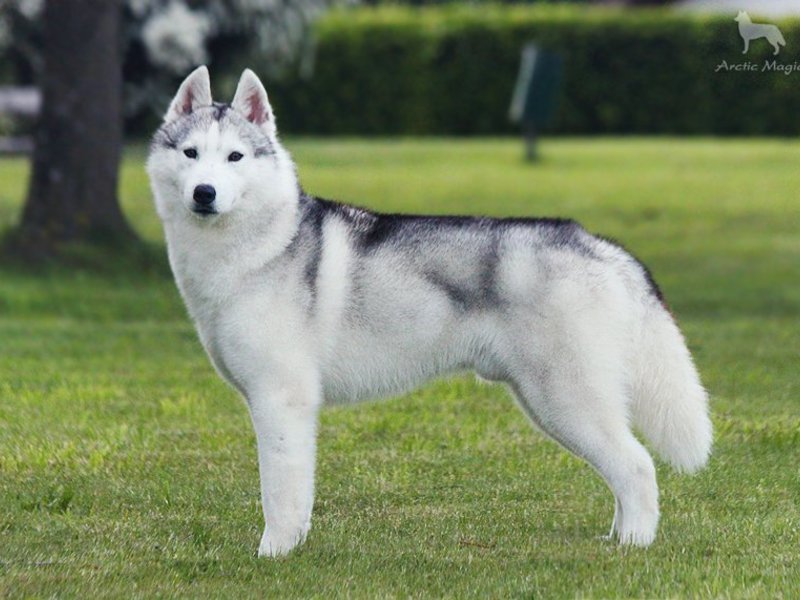Table of Contents
ToggleLast Updated on November 28, 2024 by Fumipets
Hysterics as Owners Buy New House: Confused Dog Always ‘Waiting to Leave’
Moving to a new home is a monumental event for any family, but for pets, the transition can be filled with uncertainty. A dog’s perspective on a new environment is shaped by unfamiliar surroundings, scents, and routines, making adjustments a process that requires time and patience. In one heartwarming and slightly humorous story, a family’s dog highlighted just how challenging this process can be.
This tale, shared on Instagram, struck a chord with viewers worldwide. Here’s an expanded look at the confused pup’s predicament and how pet owners can help their furry friends feel at home during a move.
A New Home, but an Old Routine for One Confused Pup
Relocating is often a thrilling milestone for families, but it can leave pets feeling disoriented. This was the case for a dog featured on the Instagram account @whitford_in_the_wade. After his family moved into a new house, the pup found himself yearning for the comfort of his old home.
In the viral clip, the dog sits at the bottom of the staircase, clutching a shoe in his mouth, ready to “head back.” With over 903,000 views and 50,300 likes, the video shows the dog seemingly packed and prepared to leave at a moment’s notice, waiting for his owners to utter the magic words to return to familiar territory.
The post’s caption humorously reads: “Better get used to it buddy.”
Reactions to the Viral Video
The video garnered plenty of reactions from viewers, who could empathize with the dog’s apparent longing for his old home.
- “He’s like, ‘We need to go back to get my bone I buried,’” one commenter wrote.
- Another said: “Ok, that’s enough, let’s go home now.”
- A third joked: “I don’t think the dog is impressed with the new lodgings.”
The dog’s owners noted in the comment section that they hadn’t washed his blankets yet, hoping their familiar scent would help ease the transition. In the meantime, their furry companion continues to wait patiently by the door, seemingly holding onto hope of returning to his old stomping grounds.
Why Do Dogs Struggle With Moving to a New Home?
Dogs are creatures of habit. Their daily lives revolve around consistent routines, familiar smells, and well-known spaces. When their environment changes, it can leave them feeling anxious or unsettled.
Key Reasons for Canine Stress After a Move:
- Loss of Familiar Scents: Dogs rely heavily on smell to recognize their surroundings. A new home lacks the comforting scents of their previous environment.
- Change in Routine: Moving disrupts the daily rhythm of feeding, walks, and playtime.
- Unfamiliar Environment: A new space can feel threatening or confusing, as it’s full of unfamiliar sounds, sights, and smells.
- Separation Anxiety: Dogs may feel nervous when separated from familiar objects or when their owners are preoccupied with moving tasks.
How to Help Your Dog Adjust to a New Home
Transitioning a pet to a new home requires patience, understanding, and a few strategic measures. Below are some expert tips to help your furry friend settle in smoothly.
1. Create a Safe Space
Set up a designated area in the new home with your dog’s bed, favorite toys, and items that carry familiar scents. This “safe zone” can help reduce their anxiety.
2. Stick to Their Routine
Dogs thrive on predictability. Keep their feeding, walking, and playtime schedules as consistent as possible to provide a sense of normalcy.
3. Use Familiar Scents
Unwashed blankets, old toys, and items with your scent can make your pet feel more at home. Avoid introducing new items right after a move.
4. Gradual Exploration
Let your dog explore the new space at their own pace. Start with one room and gradually expand access to other areas.
5. Avoid Additional Changes
Avoid switching foods, beds, or collars during the transition period. Too many changes can overwhelm your dog.
Signs of Stress in Dogs After a Move
Moving can cause stress for your pet, so it’s important to recognize the signs and address them promptly.
Common Symptoms of Stress in Dogs:
- Tense or stiff posture
- Excessive whining or howling
- Guarding toys or food
- Hiding or avoiding interaction
- Increased destructive behavior, like chewing
- Loss of appetite
If these behaviors persist or worsen, consider consulting your veterinarian for guidance.
Expert Recommendations for Easing the Transition
The online pet care resource Rover suggests that owners decorate their new home in a way that mimics the setup of the old one. Placing furniture and items in similar locations can provide a sense of continuity. Additionally, spending extra time with your dog, offering reassurance, and engaging in fun activities can help create positive associations with the new environment.
The Heartwarming Humor of Canine Adaptation
While the dog in the viral Instagram video may still be adjusting, his antics have brought smiles to thousands of viewers. His innocent misunderstanding of the move serves as a reminder of how deeply pets are connected to their environments and routines.
As one commenter poignantly noted: “We are their whole life. The shortest amount of time we have loving them and giving them the world. While we spend the rest of ours grieving the most unconditional love we ever have. I’m so sorry.”
Conclusion
Moving to a new home is a significant change for every family member, including pets. By taking deliberate steps to ease their transition, you can help your furry friend feel at ease in their new environment. Just remember: with time, patience, and a few familiar comforts, your dog will come to love their new home just as much as their old one.
FAQs About Helping Dogs Adjust to a New Home
1. How long does it take for a dog to adjust to a new home?
Most dogs adjust within a few weeks, but it can take longer for some, depending on their temperament and the effort made to help them acclimate.
2. What can I do if my dog refuses to eat after moving?
Try feeding them in their safe space and adding familiar-smelling items nearby. If their appetite doesn’t return within a few days, consult a veterinarian.
3. Should I introduce my dog to new people during the move?
It’s best to minimize new interactions during the transition period to reduce stress.
4. Can moving affect a dog’s health?
Stress from moving can lead to temporary issues like upset stomachs or lethargy. If symptoms persist, seek professional advice.
5. What’s the best way to reassure my dog after a move?
Spend quality time with them, stick to routines, and provide plenty of affection to help them feel secure.
For more details on this story, visit Newsweek.


















